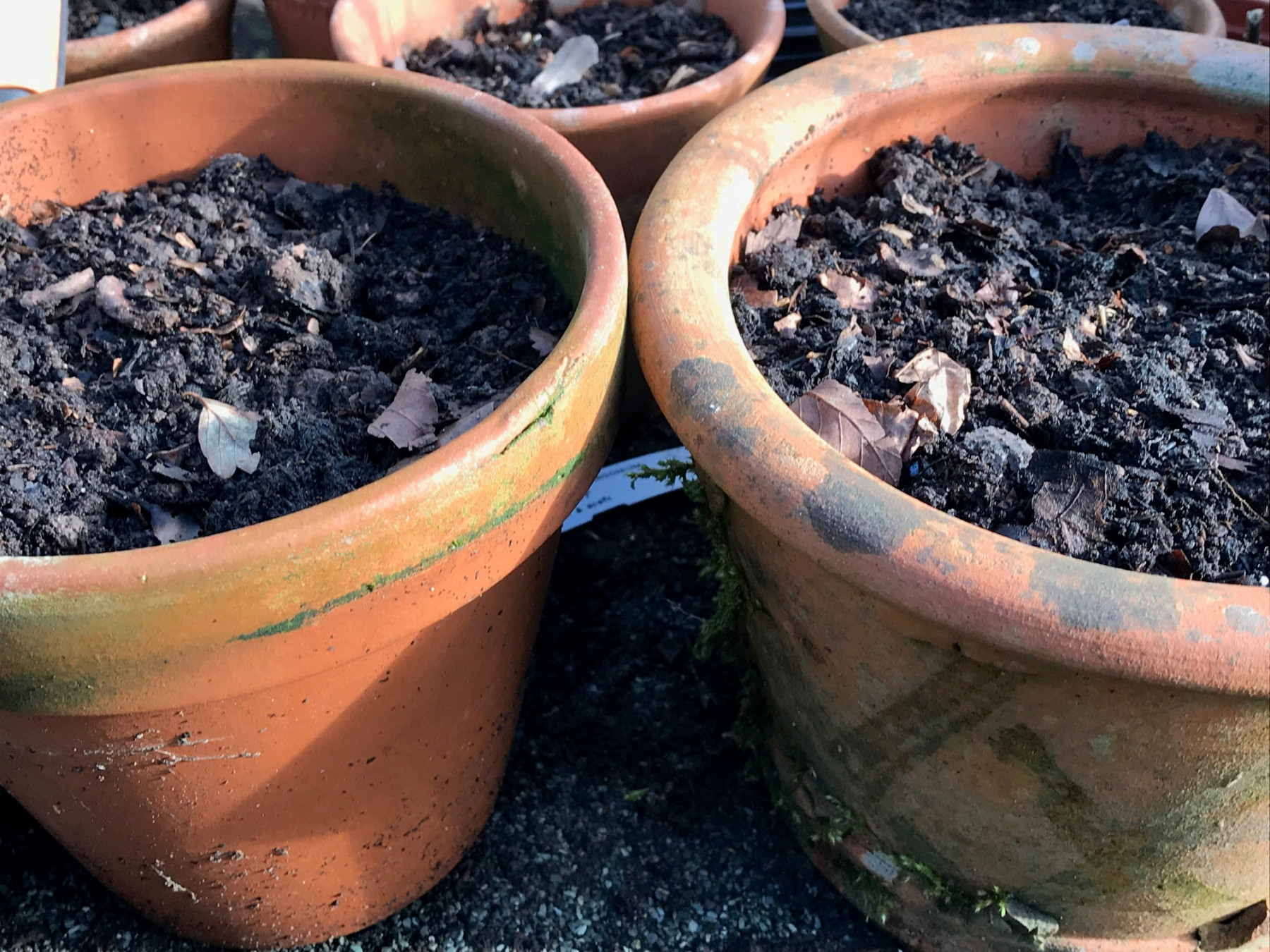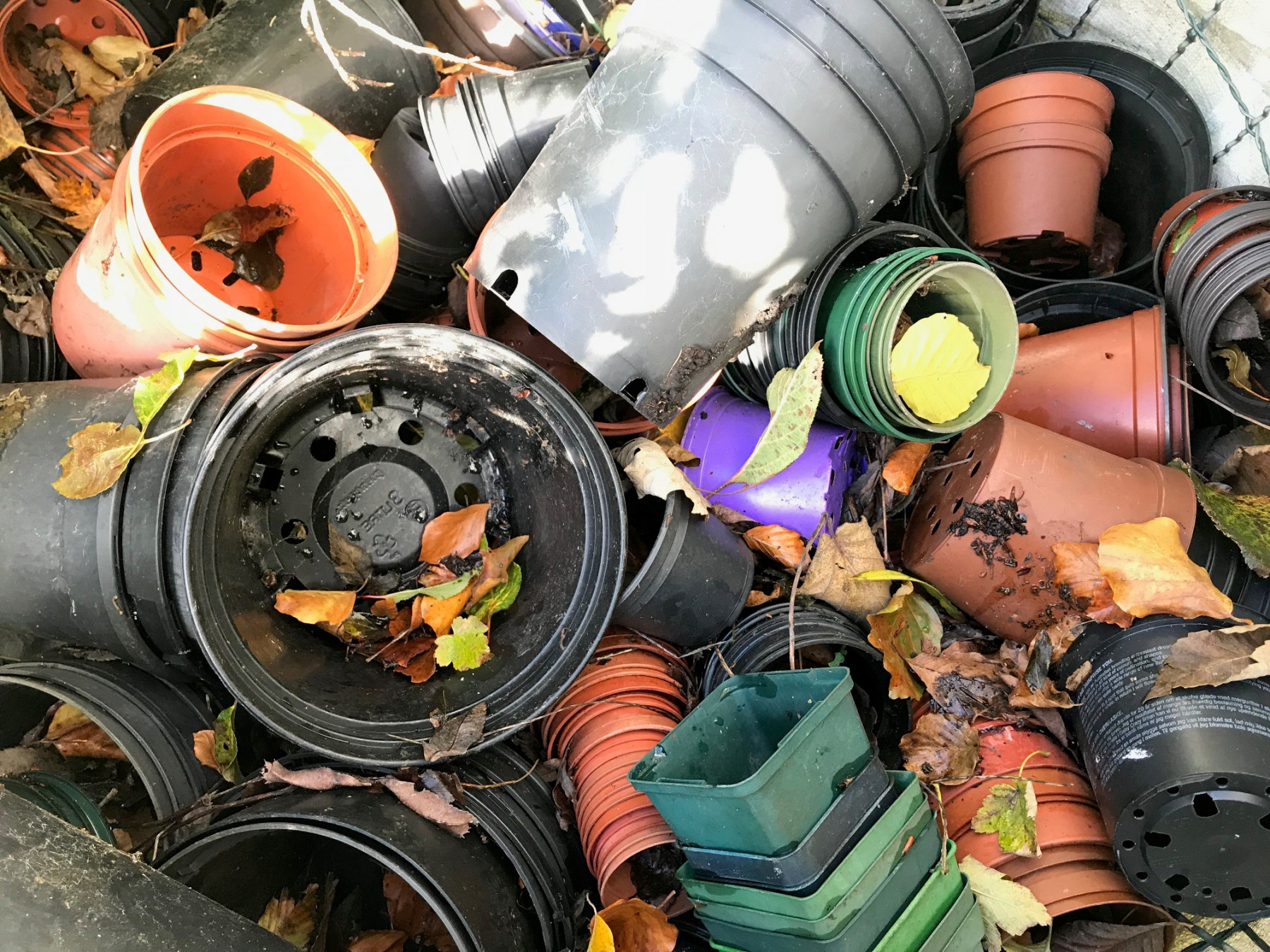
Until plastic started washing up on our beaches and hitting the television screens with heart wrenching scenes of wildlife entangled in rubbish, plastic was fantastic.
In many ways it still is fantastic, it’s not really the plastic that’s the problem, its what we do with it and how we dispose of it. For such a high tech, valuable material it beggars belief that we throw it away without a second thought.
Show me a gardener that doesn’t have a stash of used plastic flowerpots in the greenhouse, shed or garage. I’ve got a tonne bag full of them, but I do re-use them again and again and again.
They do last for years, even after exposure to the elements, but what hasn’t been particularly well publicized is that pretty much all of these pots can be recycled. They just won’t be taken by many council-recycling schemes. But they are mostly made from recycled plastic and a material called polypropylene that is a valuable resource. Cleaned and shredded this type of plastic can have a second life as well as a plastic flowerpot or some other polypropylene item. That in itself is fantastic.
Recycled Plastic
Take a look in the kitchen at the plastic pots and containers. Those margarine pots, yoghurt cartons and drinks bottles are mostly made from polypropylene and can all be reincarnated as a new product if they are recycled. We can direct much of this material into the recycling systems orchestrated by our council recycling schemes, but we all know that there are some things that just won’t be taken. Black plastic flowerpots are just one of these.

Despite being made of recycled plastic already and out of polypropylene that can be recycled again and again, our plastic flowerpots are rarely collected for recycling. And that may be why gardeners across the UK have a stash of pots ‘that might come in useful’ for potting up seedlings and plug plants.
Garden centres are being encouraged to take back used flowerpots that gardeners have finished with and recycling them en masse. That means most flowerpots; even the red and various coloured ones can be returned to many garden centres and given a new lease of life. If your local garden centre doesn’t offer this service then please ask them to consider it. The more plastic that can be diverted away from landfill and reused or recycled the better. Gardeners know the value of precious resources and understand the finer balance of nature and the environment and we all want to do our bit.
Taupe flowerpot
Look out for the taupe flowerpot at a garden centre near you. It may not start to appear until next spring, but it’s been embraced by the garden industry and it’s already in production. Like the black and red plastic flowerpots these pots are also recyclable but the difference is that these pots can and will be recycled via our council run kerbside collection systems. That’s because after a lot of research and trials, the taupe pots are free of carbon black pigment and will be picked up by the sensors at the recycling depots and directed into the recycling process. In other words you can put them out with the recycling if you aren’t able to use them again. And that’s idea’ for anyone with a tiny plot, balcony or roof garden that can’t reuse them and doesn’t have space to stash them away.
Future proof
It’s time to take a look at your hoard of flowerpots. Do you need them all?

Use the winter to sort the shed, empty the greenhouse and evaluate your pile of pots. Sort them into sizes and shapes. I find the square ones much more useful and I’ve got too many odd ones that are flimsy and cracked. The broken ones can be recycled too so sort them out and get them back into the system so that they can have a new life as something else. Have a think about how you can reduce your plastic use in the garden. Buy a paper potter that enables you to make mini pots out of old newspaper. Ideal for potting up seedlings. Plant labels are another tricky dilemma. Wooden lollypop labels are a possible alternative and maybe it’s time to even to revert back to clay pots and wooden seed trays. Food for thought at least.


